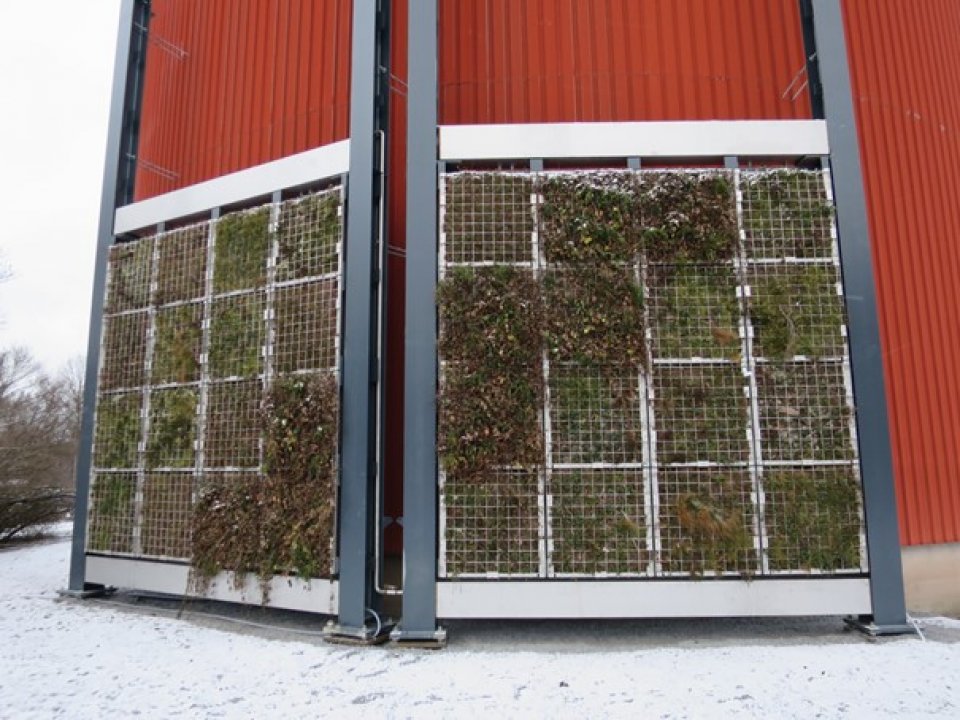
The green wall is built on the wall of the wastewater pumping station in Viinikanlahti district in Tampere. The vegetation of plant boxes is implemented as multispecies mixed planting. Vegetation is selected from the local species to support biodiversity and ensure growth in harsh climate.
The main purpose of the arctic green wall is to manage water flows (storage) and water quality, with particular focus on understanding its performance during cold seasons. Arctic green wall will also produce new knowledge related to suitable plant species for sub-arctic climate with variable freeze-thaw cycle and snow load.
The green wall is currently four meters high, but the plan is to increase it to eight metres after the winter. The structure is made of steel and consists of four vertical pillars with 64 plant boxes in between. The wall plants are made up of local species that live on top of rocks and that survive in cold conditions. Additionally, the city has used forest peat and plants from a new city district construction site for the green wall. The boxes with plants were left to grow in a horizontal position during the summer, and were only recently installed to the wall.
The green wall is located along an important ecological corridor in the city and is one of the elements supporting the biodiversity of that corridor. The wall vegetation has been selected from local species to create living habitats for pollinator insects and the city will monitor the pollinators on site.
The carbon storage and water management capacity of the green wall will also be monitored. The city will, for example, study the amount of irrigation water needed, the condition of the plants, the amount of water that stays on the green wall, and the amount of water that eventually drains from the bottom. The boxes have humidity sensors that will support this work. Simultaneously, the city is investigating whether the water is cleared as it flows through the green wall.
The green wall also has an aesthetic value and as a popular walking and bicycle route passes by the wall, the city hopes that the diverse wall will help improving the wellbeing of city dwellers who pass by or live in the dense area.
- Developing climate change adaptation; improving risk management and resilience
- Increase infiltration / Water storage
- Reduce load to sewer system
- Reduce run-off
- Reducing temperature at meso or micro scale
- Developing climate change mitigation
- Restoring ecosystems and their functions
- Increase Biodiversity
- Increase quality and quantity of green and blue infrastructures
- Changing image of the urban environment
- Improve water quality
The green wall has a mobile structure as it eventually will be placed on the wall of a new pumping station that will be built in the area in the next years. The new pumping station will be built when the wastewater treatment plant is moved from its current central location to the outskirts of the city, and Viinikanlahti becomes a new housing district. The irrigation water for the wall is currently collected from a lake water well, but the new pumping station will allow for rainwater to be harvested from the roof and used for irrigating the wall. The metal plant boxes are designed to allow the irrigation water to drain from one box to the next one.
During the UNaLab project, good practices, lessons learned and information about realised and potential barriers to the adoption of Nature-Based Solutions (NbS) have been collected. This information has been recorded into several UNaLab project documents. A separate summary document of lessons learned to give a quick overview and starting point for this information has been also produced. This document will soon be added to UNaLab website.
- Arctic green wall
